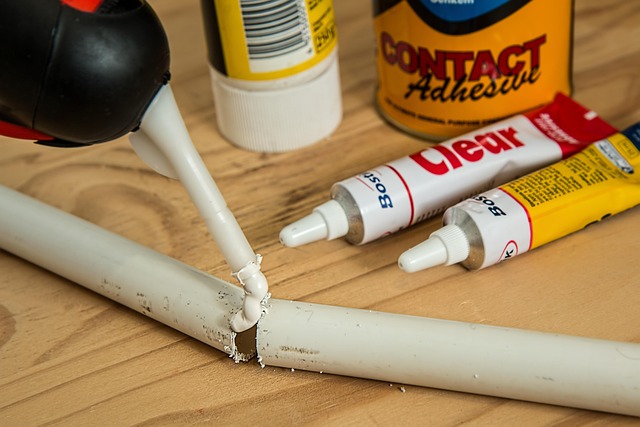The sustainability of Glue Laminated Beams (glulam) offers environmental benefits through energy-efficient lamination, reduced carbon emissions, and prolonged durability. Modern processing techniques and responsible sourcing reduce ecological impact compared to traditional methods. Adopting biodegradable materials, recycled options, and eco-friendly adhesives further align with sustainable construction trends. Certification programs ensure glulam meets stringent environmental standards, driven by consumer demand for eco-friendly building materials.
The glulam industry, renowned for its structural strength and versatility in construction, faces a growing demand for sustainable practices. This article explores the sustainability of glue laminated beams (glulam) through comprehensive sourcing and processing standards. We delve into the environmental implications of traditional wood sourcing, highlighting the importance of defining sustainable principles. Additionally, eco-friendly glue options, efficient manufacturing, certification, and consumer awareness are discussed to promote environmentally responsible glulam production.
- Understanding Glulam: Materials & Processes
- Environmental Impact of Traditional Sourcing
- Defining Sustainable Sourcing Principles
- Eco-Friendly Glue Options for Laminating
- Efficient & Ethical Manufacturing Practices
- Certification & Consumer Awareness
Understanding Glulam: Materials & Processes

Glulam, or Glue Laminated Beams, is an innovative and sustainable construction material that has been gaining popularity for its exceptional strength and versatility. It involves bonding multiple layers of wood together with strong adhesives, creating structural elements like beams and columns. This process not only enhances the structural integrity but also allows for the use of various wood species, contributing to a more diverse range of design options while minimizing wastage.
The sustainability of glulam lies in its energy-efficient lamination processes and the longevity of glued lumber. By utilizing advanced techniques, manufacturers can produce laminated beams with minimal environmental impact, reducing carbon emissions compared to traditional steel construction. Furthermore, glulam offers comparable strength to steel but with a lower environmental footprint. This makes it an attractive choice for eco-conscious builders, providing a strong and durable solution without the need for extensive steel reinforcement. For more information, give us a call at (607) 369-9341.
Environmental Impact of Traditional Sourcing

The traditional sourcing and processing methods for glulam (glue laminated beams) have significant environmental implications. The logging industry’s reliance on extensive deforestation contributes to habitat loss, soil erosion, and water pollution. Moreover, conventional practices often involve the use of toxic chemicals in wood treatment, releasing harmful substances into ecosystems. These processes not only damage local ecologies but also impact global climate patterns due to the release of greenhouse gases.
The sustainability of glue laminated beams is thus a pressing concern, especially as the demand for eco-conscious home construction grows. Longevity of glued lumber can be enhanced through responsible sourcing and modern processing techniques. By adopting these methods, the glulam industry can reduce its environmental footprint, ensuring a greener future for both construction practices and natural ecosystems. You can find more insights on sustainable sourcing at unalam.com.
Defining Sustainable Sourcing Principles

In the pursuit of a more sustainable future for construction, defining robust sourcing principles for glulam (glue laminated beams) is paramount. Sustainable sourcing involves ensuring that every component of the supply chain—from wood procurement to material processing—aligns with environmental stewardship and ethical practices. For glulam, this means prioritizing locally sourced, certified woods that minimize deforestation and promote biodiversity. By embracing responsible forest management, such as those adhering to the Forest Stewardship Council (FSC) standards, the industry can contribute to the conservation of precious ecosystems.
Moreover, integrating biodegradable building components and recycled material construction beams into glulam production offers a promising avenue for reducing environmental impact. These innovative approaches not only support sustainable construction trends today but also pave the way for more eco-friendly buildings. By visiting unalam.com, you can explore how our commitment to these principles translates into high-quality, sustainable products that meet the evolving needs of the industry while preserving our planet’s resources.
Eco-Friendly Glue Options for Laminating

In the pursuit of sustainable construction practices, the glulam industry is constantly evolving its methods to meet environmental standards. One key area of focus is the selection of eco-friendly glue options for laminating processes. Traditional adhesives often contain harmful chemicals and contribute to carbon emissions, making them an unacceptable choice for those committed to sustainability.
Fortunately, modern advancements have introduced a range of environmentally conscious alternatives. Carbon neutral building supplies, such as water-based glues and bio-resins, are gaining popularity in the industry. These innovative products not only reduce environmental impact but also offer exceptional bonding strength, making them suitable for structural applications like alternative to concrete structures. By embracing these sustainable construction trends today, the glulam sector is demonstrating its responsibility toward preserving our planet while contributing to a greener future, as reflected on unalam.com.
Efficient & Ethical Manufacturing Practices

In the pursuit of a sustainable future, the glulam industry is embracing efficient and ethical manufacturing practices to ensure the sustainability of glue laminated beams. These methods prioritize resource-efficient building materials and innovative laminated beam production techniques that minimize environmental impact while maximizing structural integrity. By adopting energy-saving wooden beam design principles, manufacturers are reducing their carbon footprint and contributing to a greener construction sector.
This commitment extends beyond production floors; it involves sourcing raw materials responsibly, upholding strict ethical standards throughout the supply chain, and ensuring fair labor practices. At 18 Clifton St, Unadilla, NY 13849, we invite you to visit us anytime to witness firsthand our dedication to these sustainable sourcing and processing standards that are transforming the glulam industry into a beacon of environmental stewardship and responsible manufacturing.
Certification & Consumer Awareness

Certification and consumer awareness play a pivotal role in promoting the sustainability of glue laminated beams, or glulam. As the demand for environmentally friendly wood products increases, consumers become more discerning about their building materials. Certification programs ensure that glulam products meet specific standards for sustainable sourcing and processing, including responsible forest management, low-emission manufacturing processes, and safe, non-toxic adhesives. By looking for certified glulam, architects and builders can reassure clients of the product’s sustainability and performance.
Furthermore, increased consumer awareness drives innovation within the industry. There is a growing interest in biodegradable building components, and glulam manufacturers are responding by exploring alternatives to conventional adhesives. These advancements not only contribute to a healthier environment but also offer new possibilities for design flexibility and reduced carbon footprints. For more information on how glulam benefits architects and builders, give us a call at (607) 369-9341.
The glulam industry, with its focus on structural efficiency and aesthetics, must also embrace sustainability. By adopting eco-friendly sourcing principles, utilizing sustainable glue options, and implementing ethical manufacturing practices, glulam producers can minimize their environmental impact while offering a greener alternative in the construction sector. Certification programs and increased consumer awareness play a crucial role in promoting the sustainability of glue laminated beams (glulam). These measures ensure that the industry’s future is both strong and environmentally responsible.














